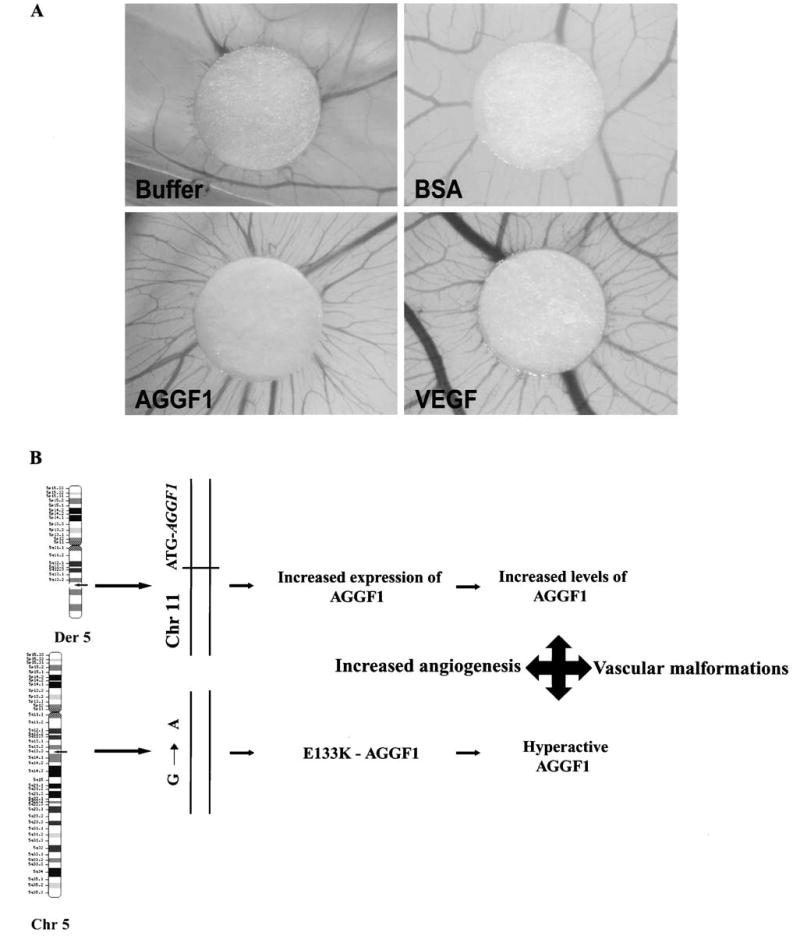Figure 3.

(A) AGGF1 is an angiogenic factor in chick chorioallantoic membrane (CAM) angiogenesis assays. Buffer (the same elution fraction as purified AGGF1, but from bacteria with the empty expression vector) and BSA were negative controls, and VEGF-A (100 ng/μl) was used as a positive control. AGGF1 protein (75 ng/μl) promoted strong angiogenesis. (Adapted from Tian et al. [61] with the permission of Nature Publishing Group). (B) A molecular mechanism for the pathogenesis of KTS. Small arrows on the chromosomes show the location of AGGF1. Translocation of the chromosome 11 sequences upstream of AGGF1 causes a threefold increase in expression of AGGF1, resulting in increased levels of the protein. Mutation E133K increases the angiogenic activity of AGGF1. Both effects are expected to result in increased angiogenesis, which leads to the development of vascular malformations in KTS patients (Chr, chromosome; Der, derivative).
